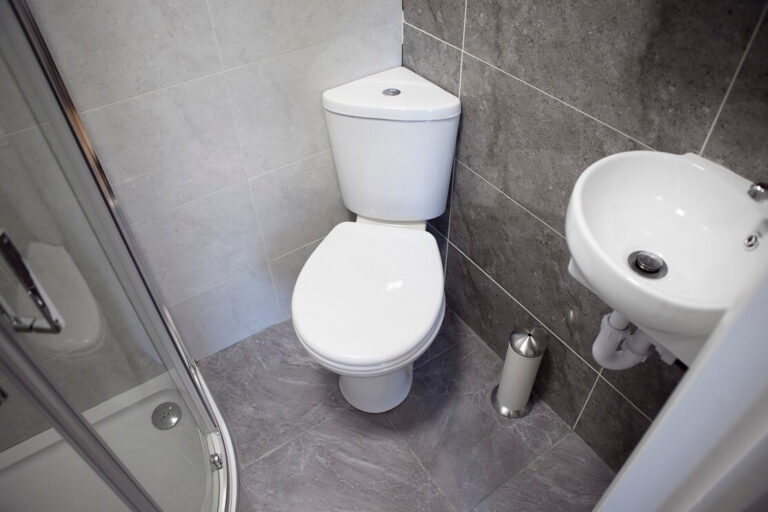WHY BUY TO LET IS HERE TO STAY
Investors and landlords have faced several challenges recently including:
- new rules making it harder to evict problem tenants
- the loss of buy-to-let tax relief on mortgage interest repayments and
- temporary lockdown due to COVID-19
…which has led them to reduce their property portfolios or put their growth plans on hold
However, our research indicates that buy-to-let is here to stay with opportunities for investors willing to have a longer-term strategy over the coming five to ten years.
This blog summarises why buy-to-let is here to stay and what the long-term strategy ideas you may need to consider.
Why buy-to-let is here to stay?
Demand for housing in London has exceeded supply for more than two decades, which has increased rental demand. Research from the “English Housing Survey”, indicated that the number of UK renters doubled in the past 20 years to over 20% of the population living in the Private Rented Sector.
What’s more, a new research by PricewaterhouseCoopers (PWC) reveals that London will be a city of renters by 2025 with only 40% of Londoners being homeowners.
There are two main reasons for this:
Reason one is financial: High housing prices are making homes unaffordable. If people can’t save for a deposit or have a bad credit rating, then renting is the only option.
Reason two is lifestyle: the trend is that people are choosing to move more than ever before. They are choosing to move for work, social connections and new experiences.
For these two reasons, demand for rental housing is going to increase, which means buy-to-let is here to stay as an investment opportunity for landlords.
However, before buying your next buy-to-let property, there are numerous factors to consider.
1. Mortgage interest tax relief changes
The government has been phasing out tax relief on mortgage interest. This means the proportion you’re allowed to deduct is being reduced each tax year.
Speak to your accountant to find out more information on how the mortgage interest tax relief may impact you.
2. Letting fees banned
Letting agents in England were banned from charging letting fees to tenants, from 2019. This led to some concerns for landlords as they needed to pay for the processes of reference checks instead of their letting agent doing this.
Since we began in 2006, we never charged letting fees for tenants. Our property management services include a rigorous screening process to find your best tenant, but without the extra charges to you or your tenant.
3. Section 21 evictions
On 19 December 2019, the Queen’s Speech announced a Renters’ Reform Bill that would abolish ‘no fault’ evictions by removing Section 21 of the Housing Act 1988. The proposal is to change the way landlords can take possession of their property.
4. Local HMO licensing
HMO Property Licensing Schemes help councils protect private tenants by controlling and monitoring the quality of HMO accommodation. There are three types of HMO licences:
- Mandatory licensing – this applies for large HMOs where there are five or more tenants from two or more households
- Additional licensing – this applies when a council requires smaller sizes of HMOs to be licenced. This may include properties that are occupied by three or four people living together as two or more separate households. This may also include any purpose-built self-contained flats in a block of three or more, or buildings that have been converted into self-contained flats.
- Selective licensing – this is provided at the discretion of a council or borough and can affect properties regardless of the size or number of tenants. Selective licensing may apply to privately rented properties occupied by single households located in specific areas. There is no central directory of which council or borough have selective licensing schemes.
You can find out more about HMO licensing conditions here. (link to https://rekaproperty.co.uk/hmo-property-licensing/)
Determine Your Long-Term Strategy
Investing in buy-to-let property provides several strategy options. Before you decide on what type of property you want to buy, you need to be clear on your strategy. This may include:
- Renovate and convert the property into an HMO to maximise your rental return
- Hold the property for the long-term increase in value
- Build property to sell
- Renovate older properties to increase their value for sale
This also includes being clear on what is your exit strategy. You want to think about this at the beginning so you can make the right decisions for the life of your investment.
When you are thinking of strategy, you will want to consider the following:
- The type of tenants you want
- Finding the right location
- The potential for capital growth
- The type of property structure you want
- The most valuable property features
- The total investment cost
Types of Tenants You Want
Be clear on the type of tenant you want to rent your property to. Do you want to rent your property to:
- Students
- Working professionals
- Local housing allowance
Also consider if you want to offer a single let or multi-let.
Finding the Right Location
Once you have an idea of the type of property you want (flat, townhouse, HMO, house) and which tenants may be interested in your property, then you can determine suitable location options.
When researching locations, it’s important to consider not only where the growth areas are, but also which locations are popular for young professionals, families, students or retirees.
When you are researching locations, consider things like:
- Is it in a safe neighbourhood?
- Is it walking distance to transport?
- Is it walking distance to London Central?
- Is it close to great restaurants, pubs, squares, parks?
- Is it close to schools, universities or leisure facilities?
The Potential for Capital Growth
Do your research of the area to check if there is the potential for capital growth by checking the supply of properties in the area versus the demand.
If the demand is predicted to rise faster than the supply, then a property in this area may provide greater potential for Capital Growth.
Also check if the local Government or the Private Businesses are investing in the area, as this could lead to a population demand.
Property Structure
Once you’ve settled on a location, the next step is to decide on what property structure you want: a freehold, leasehold or an HMO property.
The description of each type is provided below:
Leasehold Properties:
- When you buy the property, you buy a lease from the freeholder. You will pay an initial purchase price and an annual ground rent, annual service charges, maintenance fees and a share of insurance for the building
- You cannot undertake any significant works on the property without the permission of the freeholder
- You may be subject to other restrictions, such as subletting rooms or pet ownership
Freehold Properties:
- You own the land, so there is no rent to pay. You have sole responsibility for maintaining and managing the building and land
- Freehold is the common way of selling houses, although some new-build houses are recently being soldleasehold
HMO Properties:
An HMO is a ‘multi-let’ rental property that has three or more tenants, not from one household/family, that share amenities. This can include:
- A house which is split into bedsits or units
- A house, or flat share, where each of your tenants has their own tenancy agreement
- Students who live in shared accommodation
- Properties above commercial buildings (such as shops, offices or restaurants)
All HMO properties must comply with the HMO rules and have an HMO licence.
Most Valuable Property Features
The next step is to find a property that provides the most valuable features that future tenants will pay more for.
This includes features such as:
- Lots of natural light
- Allowing pets
- Low maintenance garden
- Providing high-speed internet
- Parking
- Close to transport links: for inner-city locations, this includes bus and tube stops or access to major roads and a local train station
- Communal shared spaces
- Modern, clean and practical designs using quality features
Total Investment Cost
The final step is to determine the total investment costs for investing. This includes all costs to add value to the property (such as renovating a kitchen, bathroom or converting a single dwelling into an HMO).
You will also need to calculate the ongoing costs of maintenance, repairs and property management.
Investing in the Right Property
We recommend that if you are thinking about investing in a property that you start by getting professional advice, so you can make a considered decision.
At REKA Property Management, we give our clients the facts about the property industry and focus on getting the best return on your investment.
If you want to know how to achieve solid rental returns and have peace of mind with your property, then call us on +44 (0) 203 286 6468 or email us at Admin@RekaProperty.co.uk
Doug



